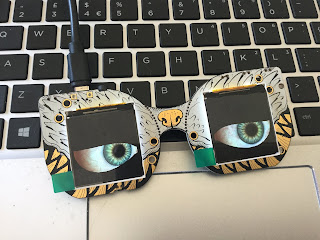Popular Posts
- This is the third of a planned occasional series of posts on playing with some of the current AI specific boards for Intenet of Things ...
- This is the second of a planned occasional series of posts on playing with some of the current AI specific add-on processors for Intenet of ...
- One of the things I enjoy is a subscription to Adabox from Adafruit, receiving the box and very soon before that finding out what the main ...
- Popular Posts Coral Accelerator on a Raspberry Pi This is the first of a planned occasional series of posts on playing with some ...
- This is really part two of a set of post in response to a question from Carl Simmons ( @Activ8Thinking ) concerning building a micro:bit ...
- In previous posts ( post 1 , post 2 ) I have raved over the brilliant combination of Mozilla's AFrame and Jerome Etienne's fantastic...
- I have recently been playing with Edublocks ( edublocks.org ) and the 4tronix's Microbit Playground (the appropriately named Super Kit) ...
- You can control servos (small ones) from a Micro:Bit directly. Following a link from the David Whale (Twitter @ whaleygeek ) , thank you, t...
- Video 1: How to produce a simple web-based augmented reality application. Video 2: Using AFrame and AR.js to create AR - this tim...
- This post looks at using the Adafruit Circuit Playground Express to react to music. I used Adafruit MakeCode ( https://makecode.adafruit.co...
All opinions in this blog are the Author's and should not in any way be seen as reflecting the views of any organisation the Author has any association with. Twitter @scottturneruon
























